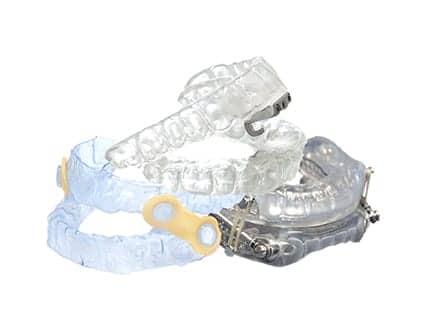Sleep Review’s inaugural poll suggests that OAT affordability and efficacy concerns may explain why physicians and sleep center directors do not refer more non-CPAP-adherent patients to dentists for treatment.
Oral appliance therapy (OAT) is an increasingly popular alternative to CPAP for obstructive sleep apnea (OSA) patients—and Sleep Review has correspondingly been increasing our editorial coverage. For the first time, we independently surveyed a segment of our readership to discern their perceptions of OAT, as well as glean insights into patient awareness.
About the Survey
Sleep Review conducted the online survey between 12/2/15 and 12/29/15. We targeted sleep medicine professionals in the following roles (percentages of actual respondents are in parentheses): sleep center director, supervisor, or manager (64%); sleep medicine physician (23%); pulmonologist (4%); neurologist (4%); and otolaryngologist (2%). We wanted insights into what physicians and sleep center directors think about OAT and what the considerations are when determining whether to refer an OSA patient to a dentist.
The survey was less than 10 questions in length and was developed by the editorial staff in conjunction with several editorial advisory board members. As this was the first time the survey was conducted, we consider these to be preliminary results that provide a general overview only. In the future, we may conduct more focused surveys to more accurately determine practice behavior and refine the questions based on feedback from this survey.
Despite its limitations, the results of this survey point toward several relevant insights. We are sharing this results summary to encourage discussion on the key preliminary findings, as well as to provide a glimpse into the types of timely OAT-related editorial content you can expect Sleep Review to cover in 2016 and beyond.
Considerations That Matter Most
The top 3 reasons that sleep center directors and physicians do not refer non-adherent CPAP patients for OAT are a desire to try other CPAP adherence strategies, affordability concerns, and uncertainty about whether the appliance would be efficacious, the survey suggests. For this question, we provided 8 possible considerations and asked respondents to rate each from 1 (“does not factor”) to 5 (“huge factor in my decision”). Here are the average ratings.
- “I want to try other strategies to get the patient CPAP adherent.” Avg: 3.32
- “The patient won’t be able to afford the oral appliance.” Avg: 3.13
- “The oral appliance may not be efficacious.” Avg: 3.00
- “The oral appliance won’t record the patient’s adherence with the therapy.” Avg: 2.83
- “The patient may develop side effects from using the oral appliance.” Avg: 2.55
- “I worry dentists are acting outside of the scope of practice in all or in part when treating OSA.” Avg: 2.48
- “Patients ‘disappear’ when I refer them to a dentist.” Avg: 2.32
- “I don’t know a local dentist who I trust with my patients.” Avg: 1.86
Note these are raw scores unanalyzed for statistical significance.
Are Patients Aware of OAT?
We asked providers several questions to indirectly gauge OSA patients’ awareness and interest in oral appliances. According to the survey, in general, the majority of first-time OSA patients do not inquire about CPAP alternatives and do not specifically ask about OAT on their own. (Because the percentages were so low, future surveys should specifically include lower percentages as answer choices, including “0” as an option.)
But when given treatment options that include OAT, there is some patient interest. Though 43% of respondents said that less than 20% of patients express interest in OAT in this scenario and 6% said they don’t typically give OSA patients treatment options that include OAT, 19% of sleep professionals said that between 20% and 40% of patients will express interest in OAT in this scenario; 13% said that between 40% and 60% of patients will express interest; 12% said that between 60% and 80% will express interest; and 4% said that between 80% and 100% will express interest.
Practice Behavior
We asked: “When a first-time patient who has not tried any OSA therapy expresses interest in using an oral appliance, what is your typical response within the confines of that appointment? (Select all that apply.)” For this question, 62% said they explain the pros and cons of CPAP versus OAT; surprisingly, only 15% said they tell the patient to try CPAP first (this number may have been influenced by the ambiguity surrounding the OSA severity in question or by the survey design); 15% said they evaluate or schedule the patient for an OAT evaluation; 5% said they explain to the patient why OAT is not appropriate at this time; and 1% said no patients have expressed interest about OAT specifically.
Sree Roy is editor of Sleep Review. Leave your feedback below in the comments section.




